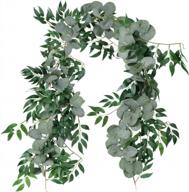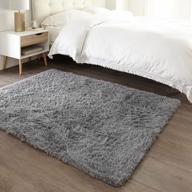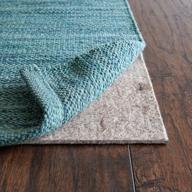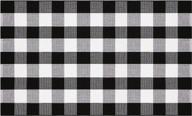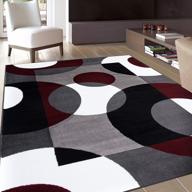Another interesting products


41 Review

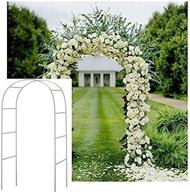

45 Review

Choosing the Right Rug for Your Space
Selecting the perfect rug for a room can really tie the space together and make it feel complete. However, with so many sizes, shapes, textures and designs to choose from, it can be tricky to find the right rug. Here are some tips to help you pick the ideal rug for your home.
Consider the Function
Think about how the rug will be used. Is it for a high-traffic area like a hallway or living room? Then a durable material like wool or synthetic may be best. For cozy spaces like bedrooms, a plush rug made from a natural fiber like cotton may be preferable. If you have kids or pets, a stain-resistant rug is a must.
Measure the Space
You'll need exact room dimensions to ensure proper rug size. Here are some general size guidelines:
- Living room rug - Leave 12-18 inches between rug and walls
- Dining room rug - Rug should be large enough for table and chairs to fit on top with 12 inches sticking out on all sides
- Bedroom rug - Place rug centrally under the bed so it extends 18-24 inches on either side
- Hallway/runner rug - Rug width should extend to 6 inches from baseboards on either side
Choose the Right Shape
The most common rug shapes are:
- Rectangular - Great for layering under console tables or framing seating areas
- Round - Ideal for defining sitting areas without sharp corners
- Oval - Provides a soft accent in any room
- Square - Perfect for anchoring furniture groupings
- Runner - Elongated rectangle ideal for hallways
In small spaces, oval or round rugs make rooms feel more open. For large open concept rooms, a collection of rectangle rugs helps define each zone.
Select a Neutral Color
Stick with muted, natural tones if you want a versatile rug. Beige, tan, gray and ivory are popular choices that won't clash. Bold patterns and colors can overwhelm a room.
Consider Materials
Rugs come in a range of natural and synthetic fibers, each with their own characteristics:
| Material | Qualities |
|---|---|
| Wool | Naturally stain resistant, durable, insulating |
| Cotton | Natural fiber, breathable, absorbent |
| Jute | Natural fiber, affordable, casual look |
| Silk | Luxurious sheen, delicate, expensive |
| Synthetic | Stain resistant, durable, affordable |
Consult a rug retailer if you need help determining the best material for your lifestyle and needs.
Assess Texture and Pile Height
Thicker rugs with long pile are cozy and plush but prone to shedding. Low pile rugs are flat and practical but may not be as cushy. Medium pile strikes a nice balance. Test out rug samples to assess comfort level.
Following these tips will make selecting an area rug much easier. Always buy the highest quality rug you can afford and care for it properly so it lasts.
Top products in 🧹 Rugs, Pads & Protectors
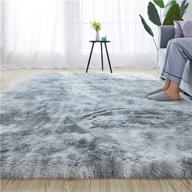

39 Review

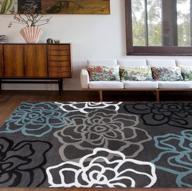

49 Review

Protecting Your Floors with Pads and Protectors
Area rugs can scratch, stain, and damage hardwood, laminate, tile, and other flooring types over time. Using rug pads and floor protectors underneath your rugs helps safeguard your floors.
Benefits of Using Rug Pads
- Cushioning - Rug pads add comfort and support underfoot.
- Reduced slippage - Pads grip the floor to keep rugs in place.
- Noise reduction - Pads muffle noise from footsteps and moving furniture.
- Floor protection - Extra barrier to prevent scratches and indents.
- Rug lifespan - Keeps moisture away from rug backing to prevent mold and mildew.
Choosing the Right Rug Pad
Consider these factors when selecting a rug pad:
- Material - Felt and rubber are good options. Avoid cheap plastic pads.
- Thickness - Go for thicker pads, usually 1/4" or more, for best cushioning and grip.
- Size - Pad should be slightly smaller than rug size.
- Adhesive type - Look for a non-stick adhesive that won't damage floors.
Using Rug Protectors
Using rug protectors in high traffic areas provides an extra layer of defense:
- Entryways - Helps trap dirt, sand, snow, and moisture at the door.
- Under furniture - Prevents indentations from heavy furniture legs.
- High foot traffic zones - Adds a durable surface for walking across rugs.
Rug protector options:
- Plastic and vinyl - Affordable but not breathable. Use for short periods only.
- Mesh and net - Lets air circulate to rug. Use under furniture legs.
- Felt - Provides cushioning and protects from furniture scratches.
- Rubber - Grippy and withstands heavy use. Perfect for entryways.
Caring for Your Rug Pads and Protectors
Follow these tips to prolong the life of your rug safeguards:
- Vacuum pads regularly to remove grit and debris.
- Clean stains immediately with mild soap and water.
- Replace pads if they become worn, rippled or don't lie flat.
- Wash fabric rug protectors according to manufacturer instructions.
- Discard damaged plastic or rubber protectors.
Using quality rug pads and protectors helps maintain the look of your rugs and prevent damage to floors. Change them out periodically for continued protection.
Latest Trends in Area Rugs
Area rugs are a simple way to update the look of any room. Here are some of the newest rug styles and trends for creating fashionable spaces.
Natural Materials
Natural fibers like jute, cotton, wool and sisal are back in style:
- Jute - Adds rustic texture with its woven burlap-like appearance.
- Cotton - Offers softness and durability for high traffic areas.
- Wool - Provides comfort and warmth with rich, lasting colors.
- Sisal - Has an organic, beachy vibe perfect for casual spaces.
Moroccan and Bohemian Designs
Patterns and designs inspired by exotic locales are popular for a global chic look:
- Moroccan trellis and tile motifs in vibrant hues.
- Persian-style floral medallions and paisleys.
- Freeform boho designs in natural tones.
- Distressed, overdyed appearances.
Vintage Styles
Old becomes new again with classic distressed and worn styles:
- Antique Persian designs faded with age.
- Oriental rugs repaired with hand-stitched accents.
- Flokati shag rugs made from wool.
- Vintage-inspired kilims and dhurries.
Bold Geometric Prints
Graphic prints add dramatic impact:
- Crisp diagonal stripes.
- Retro zigzag and stair-step designs.
- Precision patterns resembling laser cut-outs.
- Bold geometrics in contrasting colors.
Shag and Faux Fur
For the ultimate in softness and comfort:
- Long shag carpets perfect for kids' rooms.
- Luxe faux fur rugs in solid and multi-toned colors.
- Super plush sheepskin and cowhide styles.
With so many colors, textures and designs to pick from, you can easily find a trendy area rug to suit your personal style.
Change up the look of any room in an instant with one of these fashionable and on-trend area rugs.
Tips for Extending the Life of Your Rugs
With proper care and maintenance, you can keep your area rugs looking fresh and new for years to come. Follow these handy tips to maximize the lifespan of your rugs.
Vacuum Weekly
Vacuuming is one of the best things you can do to prolong the life of a rug. It prevents dirt and debris from embedding in the fibers. Use a vacuum with an adjustable brush roll so you can raise it when vacuuming delicate rugs.
Spot Clean Spills Quickly
Don't let spills sit. Blot liquid spills immediately with a clean cloth. For food spills, gently scrape away any solids before blotting. Mix a mild detergent with water and blot the area to lift the stain, then rinse with clean water.
Rotate Your Rugs
Rotating rugs helps distribute wear and tear evenly so they don't get traffic patterns. For wall-to-wall rugs, do quarter turns twice per year. For smaller area rugs, swap them between high and low traffic areas every few months.
Get Professional Cleaning
Depending on the material, have your rugs professionally cleaned every 1-2 years to revitalize colors and remove embedded dirt. Ask about sealants and stain-resistant treatments too.
Use Rug Pads
Rug pads provide a non-slip barrier between your rugs and floors. Benefits include:
- Reduced wear and abrasion
- Added cushioning
- Prevention of color transfer
- Stain and moisture protection
Store Rugs Properly
If storing rugs long-term, roll them rather than folding and cover with acid-free tissue paper. Avoid hot attics, damp basements, and storage chests with mothballs. Ideal conditions are cool and dry.
Handle with Care
Lift furniture on rugs rather than dragging across. When moving rugs, roll them up and carry to avoid stressing fibers. Turn rugs occasionally to distribute wear evenly.
Follow these guidelines and your rugs will maintain their beauty and last for many years to come.
The Benefits of Natural Fiber Rugs
Rugs made from natural fibers like wool, cotton, jute and sisal provide many advantages over synthetic rugs. Here are some of the top benefits of choosing natural fiber floor coverings.
Sustainability
Natural materials come from renewable resources and are biodegradable:
- Wool is shorn from sheep every spring.
- Cotton is harvested from cotton plants annually.
- Jute and sisal are obtained from plant fibers.
Synthetics like nylon and polyester are made from non-renewable petroleum sources.
Health and Indoor Air Quality
Natural rugs don't emit harmful volatile organic compounds like some synthetic carpets. Benefits include:
- Improved indoor air quality.
- Reduced risk of respiratory problems.
- Safer for those with chemical sensitivities.
Temperature Regulation
Natural materials help moderate indoor temperatures:
- Wool rugs insulate against cold floors in winter.
- Cotton, jute and sisal rugs stay cooler in summer.
Synthetics can contribute to a room feeling colder or warmer.
Moisture Absorption
Many natural fiber rugs readily absorb moisture and humidity in the air. This helps prevent mold, mildew and bacteria growth. It also makes natural fiber carpets good choices for damp basements and bathrooms.
Comfort and Durability
Natural rugs provide comfort underfoot and stand up well to heavy use:
- Wool is soft, insulating, stain resistant and durable.
- Cotton offers cushioning and bounce back after use.
- Jute and sisal are extremely durable and resistant to wear.
Ultimately, natural fiber rugs provide unbeatable levels of comfort, beauty and sustainability.
How to Clean Different Types of Rugs
Regular cleaning is key to prolonging the life and beauty of area rugs. Use these tips to safely clean different rug materials.
Wool Rugs
- Vacuum weekly to remove dust and grit.
- Spot clean spills immediately by blotting with a cloth.
- Professionally clean every 1-2 years depending on traffic.
- Use wool-safe detergents only.
- Allow to air dry away from direct sunlight.
Cotton Rugs
- Vacuum gently 1-2 times per week.
- Blot spills quickly, then spot clean with mild detergent and water.
- Wash delicate cotton rugs in cold water to prevent dye bleeding.
- Lay flat to dry or dry vertically to prevent creasing.
Jute Rugs
- Vacuum weekly with hardwood floor attachment.
- Blot spills immediately, scrub gently with brush.
- Spot clean with vinegar and water solution.
- Rotate periodically to distribute wear.
Silk Rugs
- Vacuum gently once a week.
- Blot spills quickly with absorbent cloth.
- Spot clean delicate areas meticulously with mild soap.
- Dry horizontally and avoid direct sunlight.
Synthetic Rugs
- Vacuum thoroughly once a week.
- Rinse spills with water immediately then blot dry.
- Spot clean with a vinegar and water solution.
- Air dry thoroughly before replacement.
Always refer to the manufacturer's instructions for proper cleaning methods. With regular care, your rugs will stay looking beautiful for years.
Create a Cohesive Look with Rugs, Pads and Protectors
Tying a room together with area rugs is an impactful design strategy. Complement them with rug pads and floor protectors to create a pulled-together space that protects your floors.
Choose Complementary Colors and Patterns
Pick rug colors that coordinate with your existing decor. Look for:
- Solid rugs in one of your room's color palette.
- Patterns featuring accent colors already in the space.
- Distressed rugs blending multiple colors together.
Or make a bold statement with contrasting colors that pop against neutral floors and furniture.
Work with Room Size and Shape
Scale your rugs appropriately for the room:
- Smaller square and oval rugs for defining sitting areas in open floor plans.
- Larger rectangle rugs in living and dining spaces to anchor furniture groupings.
- Runner rugs in hallways and foyers to accentuate dimensions.
Layer with Rug Pads
Add rug pads underneath for multiple benefits:
- Grips rugs in place and prevents slippage.
- Provides extra cushioning underfoot.
- Reduces noise from footsteps.
- Protects floors from scratches.
Choose pad sizes slightly smaller than rug dimensions to allow some floor visibility around edges.
Use Protectors in High Traffic Areas
Extra protection prevents wear in heavy use spots:
- Entryway mats catch dirt, snow, and moisture.
- Felt pads prevent scratches from furniture.
- Clear plastic protects rugs under rolling office chairs.
Rotate protectors to evenly distribute wear over time.
Care for Your Investment
Proper maintenance is key. Follow manufacturer guidelines for vacuuming, cleaning, and storage.
Strategically placed rugs, pads and protectors create a pulled-together look while protecting your flooring investment.
"What Are The Different Types Of Rugs Available In The Market?"
There are many different types of rugs available in the market. Here are some examples:
What Are The Most Popular Materials Used For Rugs??
There are several materials used for rugs, each with its own advantages and disadvantages. Here are some of the most popular materials used for rugs:
When choosing a rug material, it's important to consider the space it will be used in, the amount of traffic it will receive, and how much maintenance you are willing to do.
Similar products
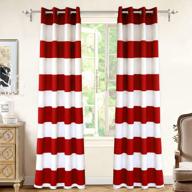

52 Review

What Are The Pros And Cons Of Using Wool Rugs??
Pros of using wool rugs:
Cons of using wool rugs:





